2025 Porsche 911 GTS Finally Goes Hybrid With Sub 3-Second 0-60 Time
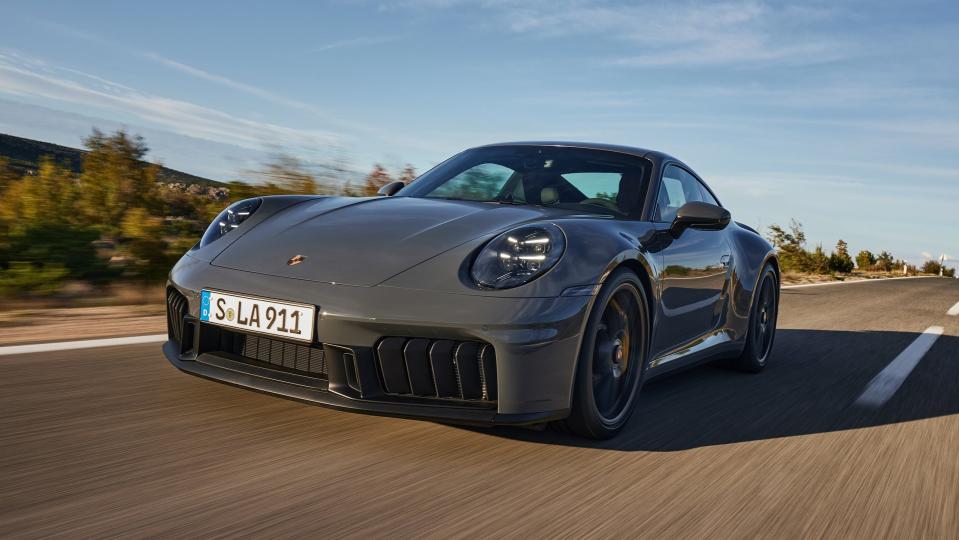
The hybrid Porsche 911 is finally here. Porsche teased it for months and even told us when it was coming, and now the company has shared technical details and photos of the electrified 911 Carrera GTS, along with a raft of other midcycle updates for the 2025 model year.
Off the bat, let’s be clear about what type of hybrid powertrain we’re talking about. Porsche’s offered plug-in E-Hybrid options on the Cayenne SUV and Panamera sedan for years now, but this is something different. Porsche’s "T-Hybrid" is no efficiency-minded plug-in—it’s closer to the motorsport-inspired performance hybrid systems in the Ferrari 296 and SF90 and the Corvette E-Ray, but with a permanently excited synchronous electric motor inside the eight-speed PDK transmission (the Ferraris sandwich their motors between engine and transmission) and a single, electrically-driven turbocharger.
Since the electric motor and PDK transmission are one, the GTS’ seven-speed manual transmission option is dead. Furthermore, Porsche isn’t talking about the previously-manual-offering Carrera S, Carrera 4S, or Carrera T models at this point, only saying that the Turbo and GT3 RS will continue alongside the new GTS and Carrera. Unless something changes, the current 2025 911 lineup doesn’t seem to offer a stick shift for the first time in the model’s 61-year history.
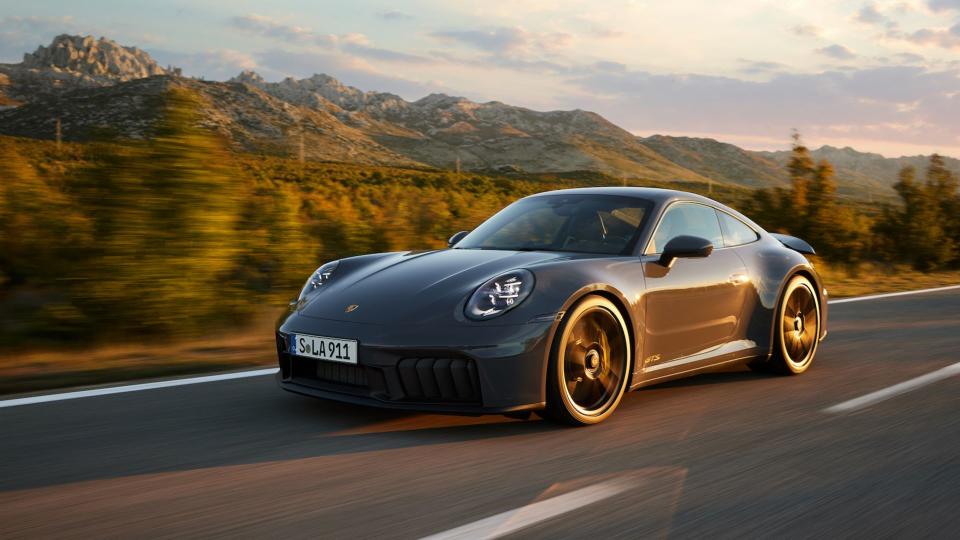
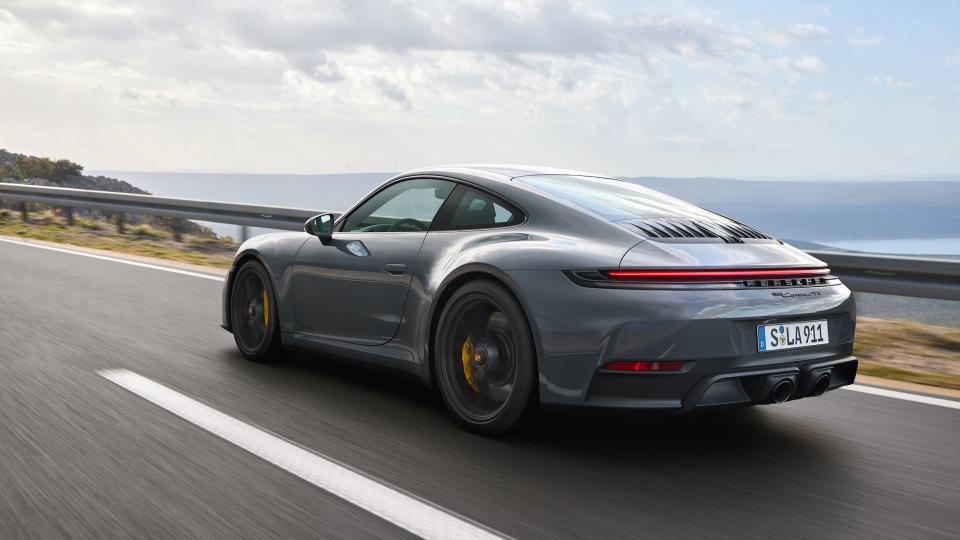
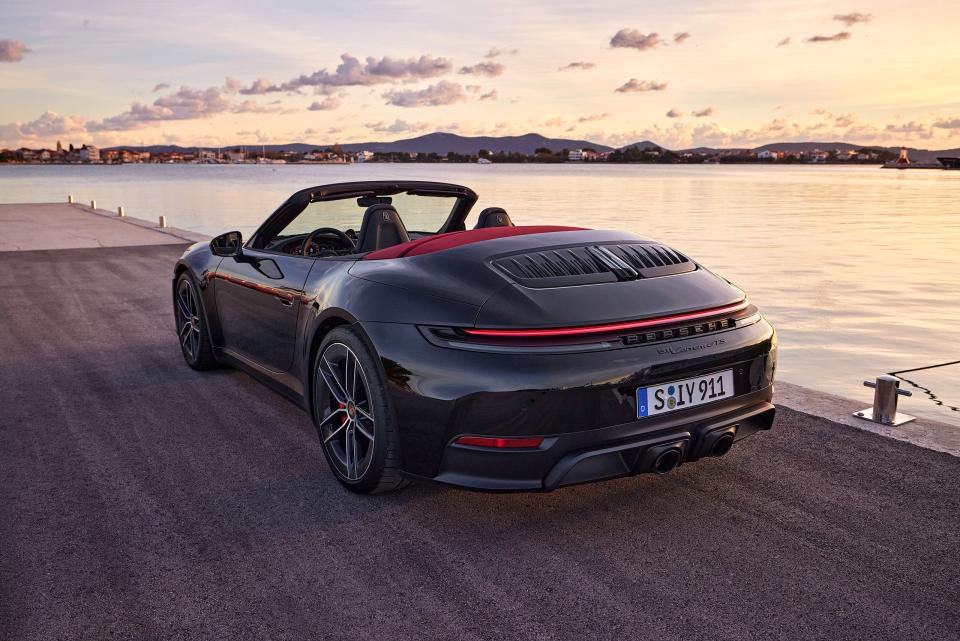
Back to what we are getting. The GTS’ now-3.6-liter flat-six engine has been bored to 97 millimeters and stroked to 81 millimeters to increase overall displacement by 0.6 liters. Without hybrid assistance, the gas engine makes 478 horsepower and 420 lb-ft of torque—roughly the same figures as the outgoing car. But total power output grows to 532 hp and 449 lb-ft of torque, 59-hp and 29-lb-ft gains over its predecessor. Porsche claims the electric motor generates up to 110 lb-ft of torque at idle and the electric turbocharger spools more quickly than the previous twin turbos, so initial acceleration should be considerably quicker. Zero to 60 mph comes in just 2.9 seconds—0.3 seconds faster than before, and within spitting distance of last decade’s 911 Turbo. Top track speed is a claimed 194 mph.
How’d Porsche’s engineers find space to increase the engine’s displacement while also fitting the pulse inverter and DC converter needed for the hybrid system? Inside the frunk, they’ve added a compact 400-volt battery that’s supposedly similar in size and weight to a conventional, 12-volt battery but can store 1.9 kWh of energy and power the electric motor, the turbocharger, and the air conditioning compressor. Porsche says this eliminates the need for a belt drive, making the engine smaller and therefore easier to package. It boasts that the 2025 Carrera GTS weighs just 103 pounds more than before, even with the new T-Hybrid system.
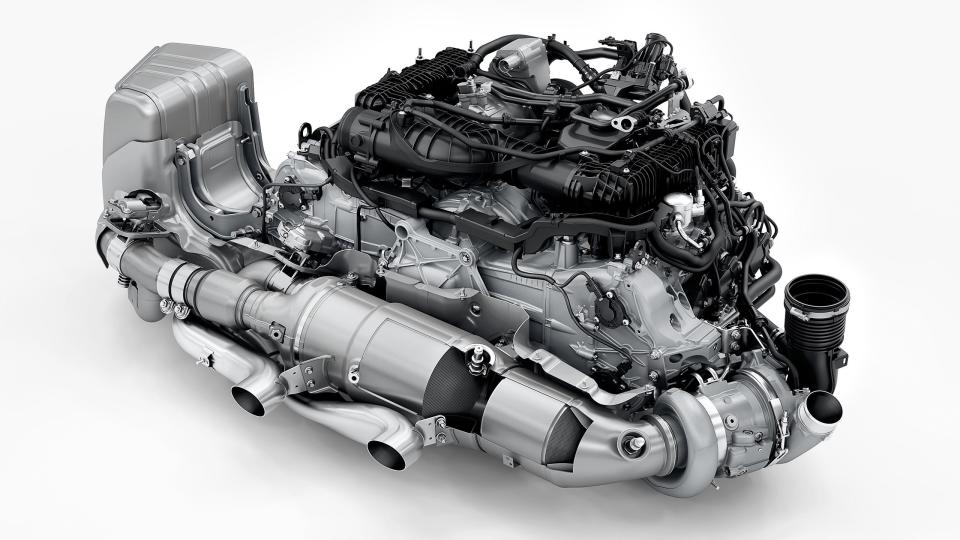
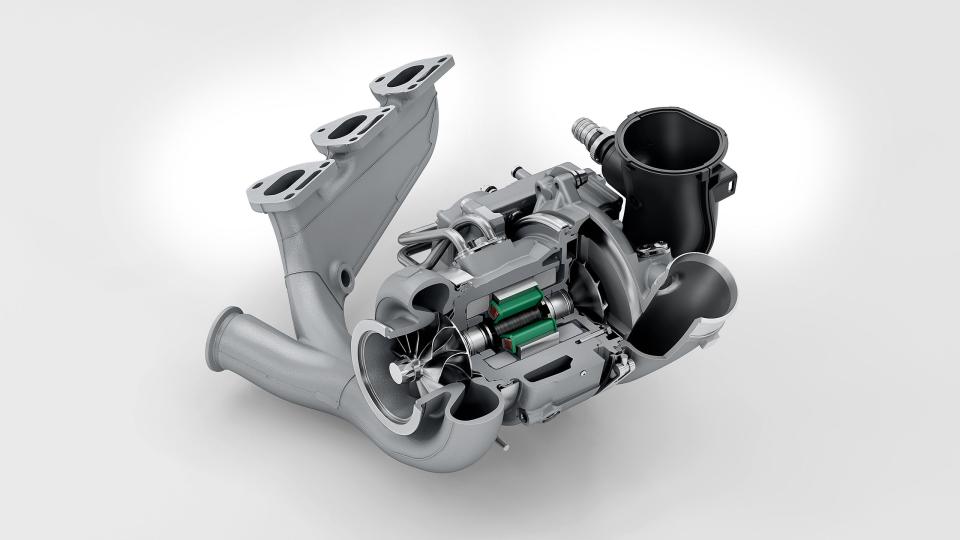
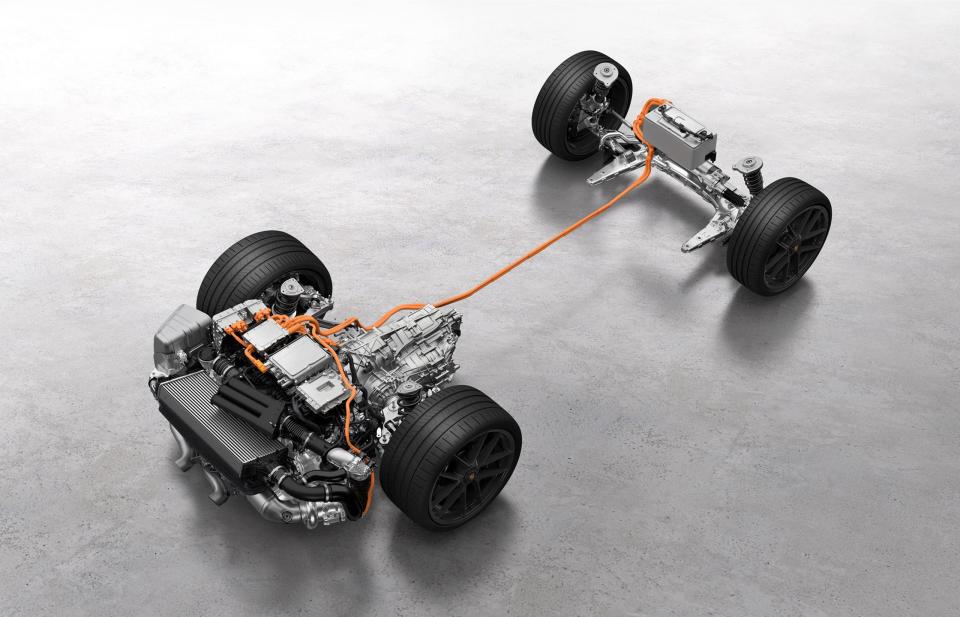
On the chassis and suspension side of things, the hybrid GTS model gets standard rear-axle steering for the first time. Porsche Dynamic Chassis Control is an option, and it uses the high-voltage battery and an electro-hydraulic control system to neutralize body movement in corners. GTS models also ride on a sport suspension and sit 10 millimeters lower than standard Carreras. In addition to the available active suspension, GTS models will get active aero via five visible flaps on the front fascia and an invisible one that shuts off a bypass.
While the hybrid GTS is the big news, there are significant updates across the model range and to the base 911 Carrera, too. Starting with the most visible: all front light functions are now integrated into the standard LED Matrix headlights, and there’s a new rear light bar with a Porsche script, in case the boys at the country club forget what kind of car you’re driving. Each model gets its own distinct, integrated exhaust, and Coupes get an available Aerokit.
Inside, the 911 loses its rear seats, though the was-standard two-plus-two arrangement is a no-cost option. As a 996 owner, I say good riddance. No adult you like is riding back there anyway, although I do understand the practicality boost for folks with small children. The dashboard features a fully digital gauge cluster with seven view options, including the classic five-gauge pod.
Standard Carrera models keep the 3.0-liter twin-turbocharged flat-six engine but gain a larger intercooler from the 911 Turbo and the hotter turbochargers from the previous GTS. These upgrades account for a nine-hp gain over the 2024 model, though the 331-lb-ft torque figure remains the same. Porsche claims a 3.9-second zero to 60 mph sprint and a 183-mph top speed, improvements of 0.1 second and 1 mph over the old car.
Porsche will sell the new GTS as a coupe or convertible with rear- or all-wheel drive, or as a Targa exclusively with all-wheel drive. Pricing starts at $166,895 delivered for the coupe and go up from there, topping out at $186,000 for the 4 GTS Cabriolet and Targa 4 GTS. For those slightly more budget-minded folks, the 911 Carrera Coupe starts at $122,095 including destination.
It’s unclear how Porschephiles will welcome the hybridized 911 GTS. Some may be rightfully upset over the loss of the manual transmission and the encroachment of electrification, while others may welcome the motorsport-derived tech the company is known for. Frank Moser, Porsche’s VP of the 911 and 718 sports car model lines, hopes fans are in the second camp, saying, “We developed and tested various ideas and approaches to decide on a hybrid system that optimally suits the 911. The result is a unique powertrain that is well-integrated into the overall concept and enhances the performance significantly.”
Whether enthusiasts and the market will agree? Well, that’s up to you.

 Yahoo Autos
Yahoo Autos 